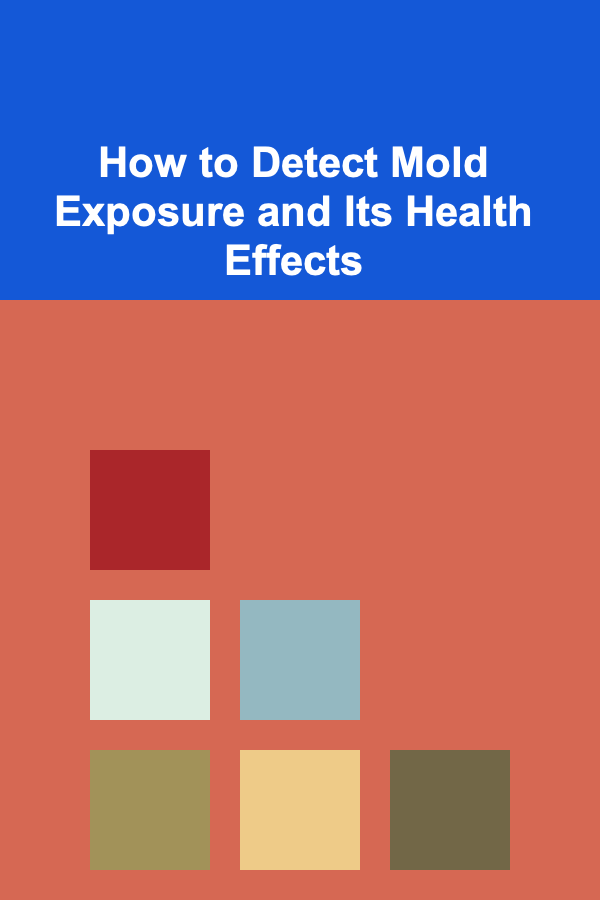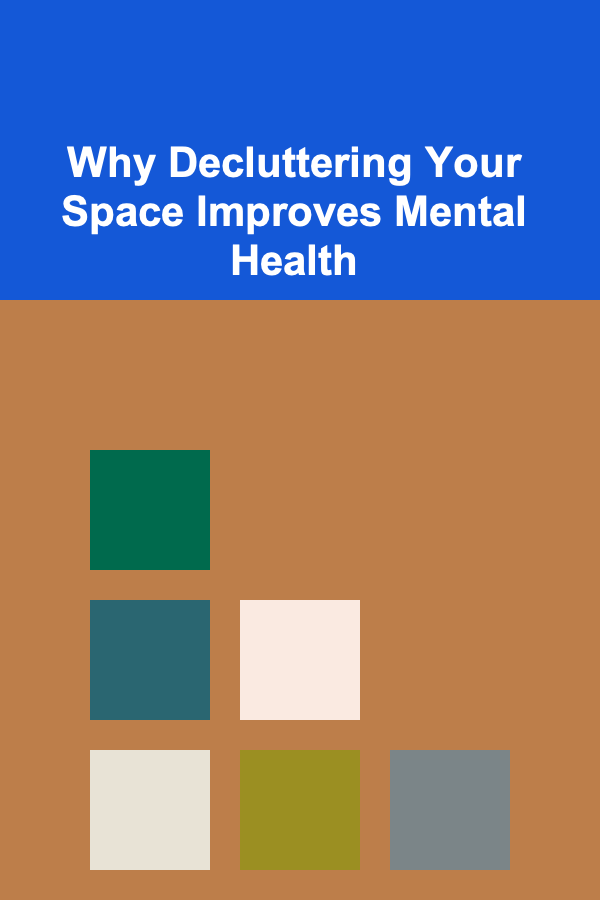
How to Detect Mold Exposure and Its Health Effects
ebook include PDF & Audio bundle (Micro Guide)
$12.99$8.99
Limited Time Offer! Order within the next:

Mold exposure is a significant public health concern, especially given that molds are common in indoor environments worldwide. Despite its ubiquity, many people remain unaware of the signs and symptoms of mold exposure and the potential health effects it can cause. Detecting mold exposure early is crucial for preventing serious health issues and maintaining a safe living or working environment.
This article explores in depth how to detect mold exposure, the various health effects associated with it, the biological mechanisms underlying these effects, diagnostic methods, prevention strategies, and treatment options. The goal is to provide a comprehensive understanding that empowers individuals to identify, mitigate, and respond to mold exposure effectively.
Understanding Mold and Mold Exposure
What Is Mold?
Molds are fungi that grow in multicellular structures called hyphae, which collectively form a network known as mycelium. They reproduce via spores, which are microscopic and airborne, allowing molds to spread easily in the environment. Molds thrive in moist, warm, and humid conditions, commonly found in homes with water damage, poor ventilation, or high humidity levels.
Common Indoor Molds
Some common indoor molds include:
- Cladosporium
- Penicillium
- Aspergillus
- Alternaria
- Stachybotrys chartarum (often called "black mold")
Each of these molds may have different implications for human health depending on their species, the quantity present, and exposure levels.
Routes of Mold Exposure
Mold exposure primarily occurs through:
- Inhalation: Breathing in airborne mold spores or fragments.
- Dermal contact: Skin touching mold-contaminated surfaces.
- Ingestion: Rare but possible if mold contaminates food or water.
Among these, inhalation is the most common and concerning route because it directly affects the respiratory system.
Detecting Mold Exposure: Signs and Symptoms
Early Signs of Mold Exposure
Mold exposure can manifest subtly or dramatically depending on the individual's sensitivity and the intensity of exposure. Early signs to watch for include:
- Nasal and sinus congestion
- Sneezing and coughing
- Throat irritation
- Watery, itchy, or red eyes
- Skin rashes or irritation
- Increased frequency of headaches
- Unexplained fatigue or malaise
These symptoms often mimic those of common allergies or viral infections, making diagnosis difficult without further investigation.
Who Is Most at Risk?
Certain populations are more susceptible to mold-related health problems, including:
- Individuals with asthma or chronic respiratory conditions
- People with weakened immune systems (e.g., cancer patients, transplant recipients)
- Infants and young children
- Elderly adults
- Individuals with allergies or mold sensitivities
For these groups, even low-level mold exposure can trigger serious health effects.
Signs of Mold Infestation in Living Environments
Detecting mold in your environment can be done visually or by recognizing environmental clues:
- Visible mold growth (often black, green, or white spots) on walls, ceilings, or surfaces
- Musty or damp odors in rooms, especially basements or bathrooms
- Water stains or discoloration on walls or ceilings
- Persistent condensation on windows or pipes
- Peeling or bubbling paint or wallpaper
Health Effects of Mold Exposure
Mold exposure can have a wide range of health impacts, from mild irritation to severe allergic reactions and toxic effects.
Allergic Reactions
Molds are common allergens. When mold spores enter the body, they can trigger an immune response resulting in allergic reactions such as:
- Allergic rhinitis (hay fever-like symptoms)
- Asthma exacerbations or new onset asthma
- Hypersensitivity pneumonitis (a rare immune system disorder affecting the lungs)
Allergic symptoms are caused by the immune system reacting to proteins in mold spores, often through IgE-mediated pathways.
Respiratory Issues
Beyond allergic reactions, mold exposure can cause or worsen respiratory conditions. Symptoms may include:
- Wheezing and shortness of breath
- Persistent cough
- Chest tightness or discomfort
- Chronic sinus infections
In susceptible individuals, mold can cause chronic inflammation of the airways, leading to bronchitis or other respiratory diseases.
Toxic Mold and Mycotoxins
Certain molds, such as Stachybotrys chartarum, produce mycotoxins --- toxic compounds that can have severe health effects when inhaled or ingested. Exposure to mycotoxins may cause:
- Neurological symptoms (e.g., memory loss, headaches, dizziness)
- Fatigue and weakness
- Immune suppression
- In severe cases, pulmonary hemorrhage or hypersensitivity pneumonitis
While the extent of health effects from mycotoxins remains an area of ongoing research, caution is warranted around toxic molds.
Skin and Eye Irritation
Contact with mold spores can cause dermatitis or skin irritation, including redness, itching, and rashes. Eye exposure can result in conjunctivitis or eye irritation.
Systemic Effects and Chronic Conditions
Prolonged mold exposure has been linked to chronic inflammatory response syndrome (CIRS), a multi-symptom illness involving chronic fatigue, cognitive deficits, and systemic inflammation. While not universally accepted, evidence suggests that mold can contribute to long-term systemic health problems in some individuals.
Biological Mechanisms Underlying Mold-Related Health Effects
Immune System Activation
The immune system recognizes mold spores and fragments as foreign invaders, triggering inflammatory responses. In allergic individuals, this involves production of IgE antibodies and activation of mast cells, releasing histamine and other inflammatory mediators.
Inflammatory Pathways
Mold exposure activates various inflammatory pathways in respiratory tissues, leading to swelling, mucus production, and tissue damage. This inflammation can cause symptoms like congestion, coughing, and airway hyperreactivity.
Mycotoxin Toxicity
Mycotoxins disrupt cellular processes by damaging DNA, interfering with protein synthesis, or altering immune cell functions. Some mycotoxins are known carcinogens or neurotoxins, which explains their potential for causing severe illness.
Diagnostic Approaches to Detect Mold Exposure
Clinical Evaluation
A thorough clinical history and physical examination are the first steps to suspect mold exposure. Physicians will inquire about:
- Symptom patterns and triggers
- Occupation and living environment
- History of allergies or asthma
- Recent water damage or mold sightings at home/work
Allergy Testing
- Skin prick tests or serum-specific IgE tests can detect sensitization to common mold allergens.
- These tests can confirm allergic responses but do not prove causality to symptoms.
Environmental Testing
- Air sampling: Captures airborne mold spores to assess concentration and species.
- Surface sampling: Tape or swab samples from suspected mold growth.
- Bulk sampling: Collecting pieces of contaminated material for laboratory analysis.
Environmental testing can help identify mold presence but must be interpreted cautiously alongside clinical findings.
Biomarkers and Laboratory Tests
- No definitive blood or urine test confirms mold toxicity, but some specialized labs offer mycotoxin panels.
- Inflammatory markers or lung function tests may be used to assess the impact on health.
Imaging
- Chest X-rays or CT scans may be necessary in cases with suspected lung involvement or hypersensitivity pneumonitis.
Prevention and Mitigation of Mold Exposure
Controlling Moisture
Moisture control is the cornerstone of mold prevention. Key strategies include:
- Repairing leaks in roofs, walls, and plumbing promptly
- Ensuring proper ventilation in bathrooms, kitchens, and laundry areas
- Using dehumidifiers in damp spaces
- Keeping indoor humidity below 50%
Cleaning and Remediation
- Small mold patches can often be cleaned with detergent and water or diluted bleach solutions.
- Larger infestations or water damage require professional mold remediation.
- Porous materials like drywall and carpet often need removal if heavily contaminated.
Building Design Considerations
- Incorporating mold-resistant building materials
- Designing for good airflow and drainage
- Using vapor barriers to prevent moisture intrusion
Personal Protective Measures
- Wearing N95 respirators and gloves during mold cleanup
- Avoiding exposure to moldy environments for sensitive individuals
Treatment of Mold-Related Health Conditions
Allergic and Respiratory Symptom Management
- Antihistamines: Reduce allergic symptoms like sneezing and itching.
- Nasal corticosteroids: Decrease nasal inflammation.
- Bronchodilators and inhaled corticosteroids: Manage asthma symptoms.
- Allergen immunotherapy: Allergy shots may help desensitize some patients.
Avoidance of Mold Exposure
The most effective treatment is minimizing ongoing exposure through environmental remediation.
Pharmacological Interventions
- Systemic corticosteroids: For severe inflammation or hypersensitivity pneumonitis.
- Antifungal medications: Rarely used for mold exposure but may be considered in specific fungal infections.
Supportive Therapies
- Symptomatic treatment for fatigue, headaches, and neurological symptoms
- Psychological support for chronic illness associated with mold exposure
Challenges and Controversies in Mold Exposure Research
Variability in Mold Sensitivity
Not everyone exposed to mold develops symptoms, complicating diagnosis and risk assessment.
Diagnostic Limitations
Lack of standardized tests for mold toxicity and variability in environmental testing results.
Differentiating Mold Effects from Other Factors
Symptoms like fatigue, headache, and respiratory issues are nonspecific and may be caused by many other conditions.
Debate Over "Toxic Mold Syndrome"
Some medical professionals question the validity of the broad term "toxic mold syndrome" due to limited scientific consensus.
Conclusion
Detecting mold exposure and understanding its health effects require a multi-faceted approach involving environmental awareness, clinical assessment, and sometimes laboratory testing. Mold exposure can range from benign to severely harmful depending on individual susceptibility, mold species, and exposure levels.
Early recognition of symptoms and prompt remediation of mold-contaminated environments are essential for protecting health. While challenges remain in fully understanding and diagnosing mold-related illnesses, current knowledge highlights the importance of vigilance regarding indoor air quality and moisture control.
If you suspect mold exposure is affecting your health, consult healthcare professionals familiar with environmental medicine and take proactive steps to assess and improve your living or working spaces. Mold may be invisible, but its impact can be very real---knowing how to detect and address it is critical for well-being.
If you would like me to provide more detailed sections, case studies, or practical guides for mold testing and remediation, feel free to ask!
Reading More From Our Other Websites
- [Home Holiday Decoration 101] How to Choose the Perfect Christmas Tree Skirt for a Polished Look
- [Organization Tip 101] How to Celebrate Achievements in Your Decluttering Journey
- [Personal Investment 101] Passive Income Opportunities in Deep Learning
- [Home Storage Solution 101] How to Use Vertical Storage to Maximize Small Rooms
- [Home Cleaning 101] How to Clean and Care for Your Rugs and Carpets
- [Paragliding Tip 101] Best Paragliding Journaling Templates to Track Flight Performance
- [Home Budget Decorating 101] How to Add Greenery to Your Home Without Spending a Lot
- [Home Budget 101] How to Budget for Home Appliances and Electronics
- [Home Budget Decorating 101] How to Budget-Friendly Design a Small Space
- [Home Space Saving 101] How to Organize Your Home Office to Maximize Small Spaces

How to Create a Peaceful Workspace with Zen Organization
Read More
How to Manage Your Money During Financial Setbacks
Read More
How to Soundproof Your Home From Loud Neighbors
Read More
How to Stage Your Home with Art and Decor
Read More
The Future of Commuting: Innovative Public Transportation Alternatives
Read More
Why Decluttering Your Space Improves Mental Health
Read MoreOther Products

How to Create a Peaceful Workspace with Zen Organization
Read More
How to Manage Your Money During Financial Setbacks
Read More
How to Soundproof Your Home From Loud Neighbors
Read More
How to Stage Your Home with Art and Decor
Read More
The Future of Commuting: Innovative Public Transportation Alternatives
Read More